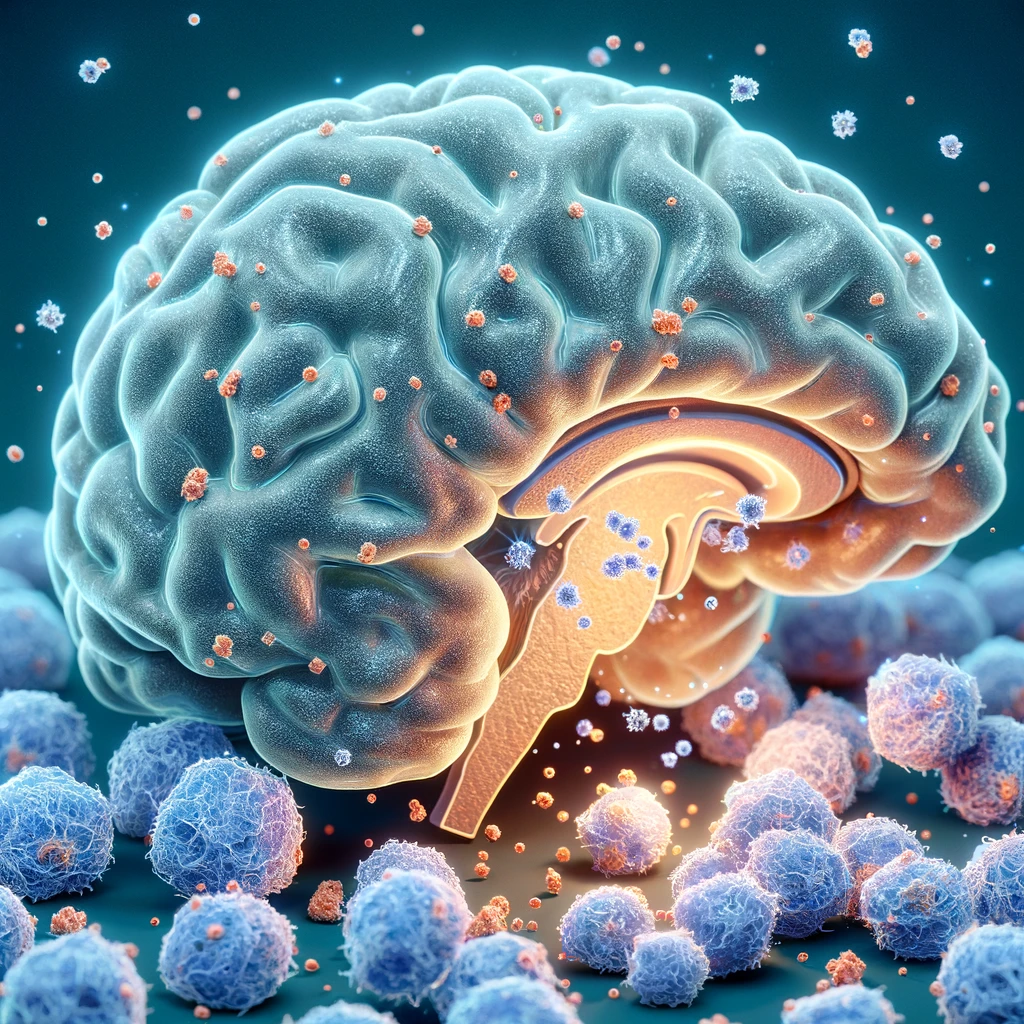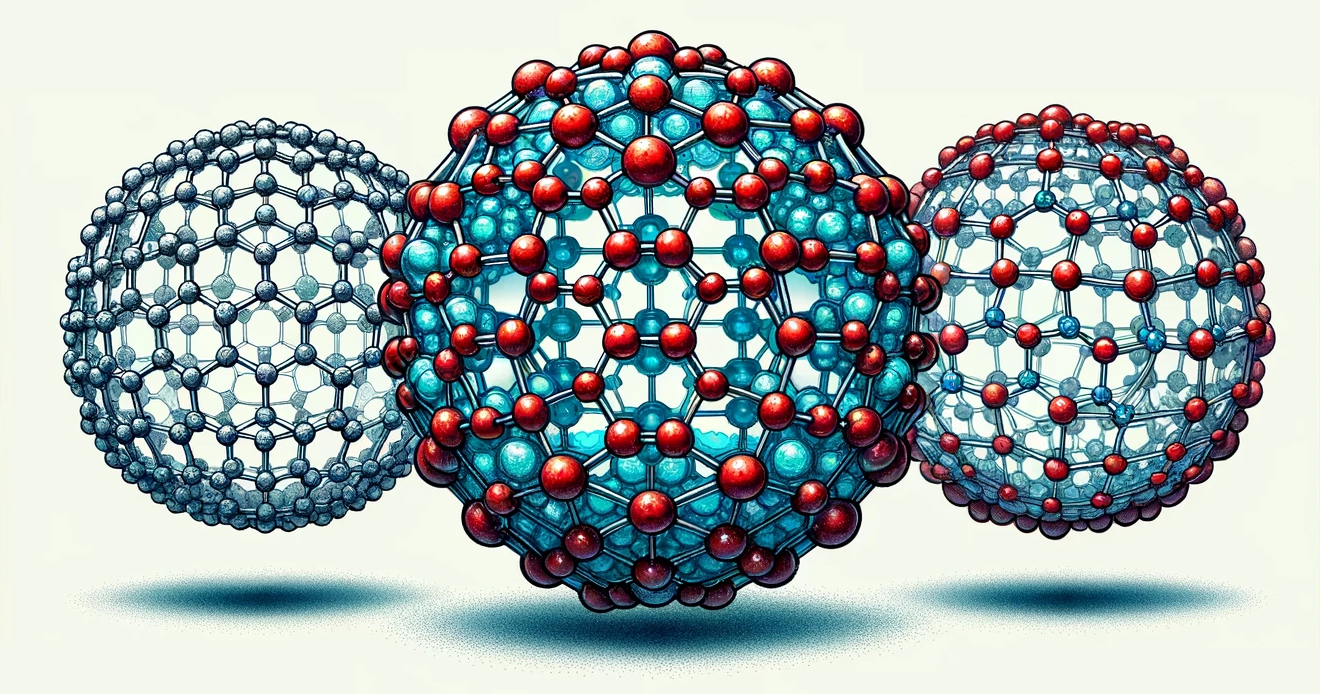Did you know that every month, about a hundred studies related to fullerene and its derivatives come out? One recent study that caught our eye is about water-soluble fullerenol and Alzheimer’s disease. You can check out the article “Role of fullerenols derivative 3HFWC in the treatment of Alzheimer’s disease“ (Ivkovic, Sanja; Koruga, Djuro) for yourself, but if biology isn’t your thing, we’ve got a little intro to help you understand all the scientific terms.
Let’s start with what amyloids are and how they’re linked to Alzheimer’s. Our cells have proteins, right? These proteins are made according to rules set by our bodies. Sometimes, though, a ‘wrong’ protein gets made. This could be due to a bunch of reasons like genetic traits, diseases, the environment, and so on. Usually, our body has a system to clean up these wrong proteins, but sometimes this system fails, or there are just too many wrong proteins, and it can’t keep up.
What Are Amyloids?
These wrong proteins in our bodies can pile up incorrectly, forming what’s known as amyloids. It’s not cancer, but where these amyloids settle can cause issues. They might increase the risk of certain problems, but it’s not a given.
Amyloids can build up in the brain, which isn’t great, right? Proteins are made up of amino acids, like building blocks. And there’s this specific sequence, KLVFF, closely linked to Alzheimer’s. It’s part of the beta-amyloid protein, playing a big role in clumping together.

and are used for illustrative purposes only
So, if amyloids with this sequence are in the brain, it increases the risk of Alzheimer’s. But remember, it’s not the only cause! You can have amyloids and not get the disease or have Alzheimer’s without these amyloids. But often, they’re connected, and that increases the risk.
Reducing amyloids might lower the chances of developing Alzheimer’s or slow its progression. However, this is still being researched and isn’t an established treatment yet.
Special lab mice called 5×FAD are used in this research. The “5” means these mice have five altered genes, making the disease develop faster.
Special modified fullerenol
The study uses a modified fullerenol with extra water layers, known as 3HFWC (https://www.mdpi.com/2223-7747/11/21/2810). This patented element is better absorbed by the body, reaching its target more effectively and leaving the body more easily.

and are used for illustrative purposes only.
This element was used in experiments with the mice. The modified fullerenol showed promising results, reducing amyloids and potentially slowing disease progression in the mice. It was also confirmed to be non-toxic, which is crucial.
Thanks to modified fullerenol, the lab mice experienced up to 30% reduction in amyloid plaques, indicating the great potential of this element in the future! We recommend reading the full article for more details. https://journals.lww.com/nrronline/fulltext/2024/08000/role_of_fullerenols_derivative_3hfwc_in_the.7.aspx
Remember, research on various fullerenol derivatives is ongoing. They’re not yet approved treatments for specific diseases.
References
- Wang, J., Zhang, Y., Li, B., Zhao, Z., Huang, C., Zhang, X., … & Zhou, R. (2024). Role of fullerenols derivative 3HFWC in the treatment of Alzheimer’s disease. NeuroReport, 35(8). Retrieved from https://journals.lww.com/nrronline/fulltext/2024/08000/role_of_fullerenols_derivative_3hfwc_in_the.7.aspx
- Subotić, A., Jevremović, S., Milošević, S., Trifunović-Momčilov, M., Đurić, M., & Koruga, Đ. (2022). Physiological Response, Oxidative Stress Assessment and Aquaporin Genes Expression of Cherry Tomato (Solanum lycopersicum L.) Exposed to Hyper-Harmonized Fullerene Water Complex. Plants (Basel, Switzerland), 11(21), 2810. https://doi.org/10.3390/plants11212810
Note: The content provided in this article, including any links to scientific research or AI-generated images, is for informational purposes only and is not intended to be a substitute for professional medical advice, diagnosis, or treatment. Always seek the advice of your physician or another qualified health provider with any questions you may have regarding a medical condition. The supplements and treatments discussed are not approved by regulatory bodies for any diseases unless specifically stated.
